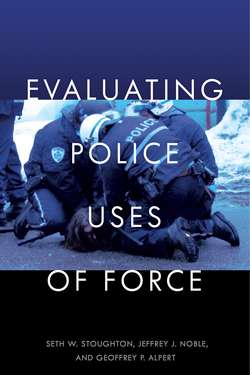Читать книгу Evaluating Police Uses of Force - Seth W. Stoughton - Страница 25
На сайте Литреса книга снята с продажи.
Community Caretaking
ОглавлениеPolice officers are charged not just with the enforcement of criminal law, but also with preserving the peace and security of their communities. As the Court has described, the community-caretaking function is “totally divorced from the detection, investigation, or acquisition of evidence relating to the violation of a criminal statute.”58 As federal judge and legal scholar Debra Livingston has written:
“Community caretaking” denotes a wide range of everyday police activities undertaken to aid those in danger of physical harm, to preserve property, or to create and maintain a feeling of security in the community. It includes things like the mediation of noise disputes, the response to complaints about stray and injured animals, and the provision of assistance to the ill or injured. Police must frequently care for those who cannot care for themselves: the destitute, the inebriated, the addicted . . . and the very young. They are often charged with taking lost property into their possession; they not infrequently see to the removal of abandoned property. . . . Community caretaking, then, is an essential part of the functioning of local police.59
Not all aspects of the community-caretaking function will establish a governmental interest that justifies the use of coercive force, but some aspects of community caretaking implicate the government’s interest in maintaining order. The preservation of public safety is one such example; although variations in state law and among the federal courts has shaped the community caretaking doctrine in different ways, all jurisdictions recognize that there is a governmental interest in protecting an individual from physical harm. The Fourth Amendment incorporates this concept by authorizing officers to use coercive authority to prevent imminent, serious physical harm by, for example, forcing entry into a private home or detaining one or more individuals.60
The governmental interest in order maintenance can justify the use of force even when the Graham factors do not appear or apply only weakly. Consider the facts of Ames v. King County: paramedics were attempting to render aid to an unconscious man who appeared to be overdosing as a result of a suicide attempt, but were being hindered by the man’s mother. The Graham factors would not clearly justify a use of force. The crime, if there was one, was not very severe; Washington Criminal Code § 9.08.040 does criminalize resisting medics attempting to discharge their legal duties, but the statute makes such resistance a gross misdemeanor. There was no threat to the safety of officers, and the subject was not attempting to evade arrest through active resistance or flight. Despite the limited applicability of the Graham factors, there was an imminent threat to the governmental interest in order maintenance: the mother was preventing the medics from providing potentially life-saving aid. The United States Court of Appeals for the Ninth Circuit correctly held that the officer on scene was justified in using force to subdue the mother so that medical workers could treat her son.61 In short, the need for officers to perform or facilitate a community-caretaking function established the existence of a governmental interest that served as a sufficient predicate for the use of force.
This does not mean that any use of force is permissible in community-caretaking situations—that question is best treated as an issue of proportionality, which we address later in this chapter. Our point here is more limited: a valid governmental interest can justify the use of force under the constitutional standard even when the Graham factors offer little guidance.
